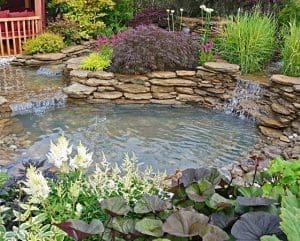Pond maintenance is an important aspect of owning a pond, whether it’s for aesthetic purposes, recreational activities, or as a source of food. Keeping a pond clean and clear not only enhances its beauty but also helps maintain the health and well-being of the aquatic life living in it. The question of how often to clean a pond is a common one among pond owners, and the answer depends on several factors such as the size of the pond, the number of fish and plants, and the surrounding environment. In this article, we’ll explore the recommended frequency of cleaning a pond and what steps should be taken to keep it in top condition.
Factors That Affect The Cleanliness of a Pond
There are several factors that can impact the cleanliness of a pond, including:
- Water circulation and filtration
- The number and size of fish in the pond
- The number and type of plants in the pond
- The surrounding environment, such as the amount of rainfall and surrounding vegetation
- The presence of debris and organic matter, such as leaves, twigs, and fallen branches
How Often Should You Clean Your Pond?
The frequency of cleaning a pond depends on the factors mentioned above. For smaller ponds with a limited number of fish and plants, a cleaning every two to three months is usually sufficient. For larger ponds with more fish and plants, a cleaning every month is recommended. In addition, the surrounding environment can play a role in how often a pond needs to be cleaned. If the pond is surrounded by trees and the area receives heavy rainfall, it may require more frequent cleaning to keep the water clear and free of debris.
Steps to Clean Your Pond
When it’s time to clean your pond, it’s important to follow these steps to ensure the process is as efficient and effective as possible:
- Remove any debris and organic matter, such as leaves, twigs, and fallen branches, from the surface of the water.
- Vacuum the pond floor to remove any built-up sediment and organic matter.
- Clean the filter and skimmer to ensure they are functioning properly.
- Test the water quality to check for any imbalances and treat accordingly.
- Trim any overgrown plants to maintain a balanced ecosystem in the pond.
Maintenance Tips for a Healthy Pond
In addition to regular cleaning, there are several tips you can follow to keep your pond healthy and clear:
- Ensure proper water circulation and filtration to prevent stagnation and promote a healthy environment for fish and plants.
- Maintain a balanced ecosystem by controlling the number and size of fish in the pond, and by keeping the number and type of plants in check.
- Keep the surrounding area clean and free of debris to minimize the amount of organic matter entering the pond.
- Regularly test the water quality and treat any imbalances to ensure a healthy environment for fish and plants.
Pond maintenance is an important aspect of owning a pond, and regular cleaning is a crucial component of keeping it healthy and clear. The frequency of cleaning a pond depends on several factors such as the size of the pond, the number of fish and plants, and the surrounding environment. By following the steps and tips outlined in this article, you can ensure your pond stays in top condition and provides a beautiful and healthy environment for aquatic life.



